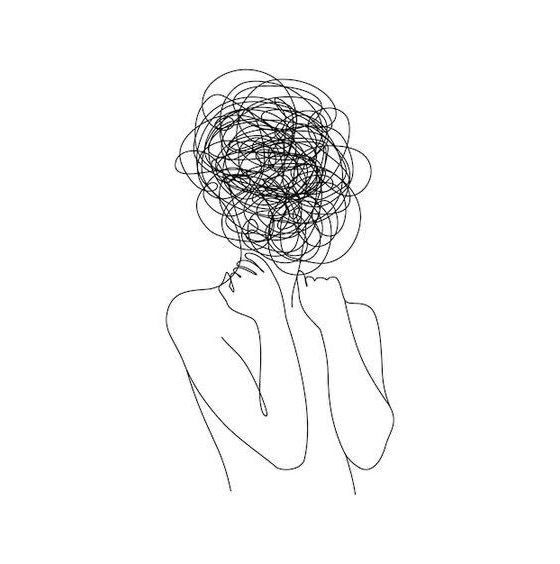Best Coping Tools for Anxiety: Practical Tips to Find Calm

Battling anxiety? Find practical coping tools for anxiety in this article. Learn about methods to help you manage symptoms and find calm.
Key Takeaways
- Understanding anxiety is crucial for recognizing triggers and symptoms, empowering individuals to seek help and manage their feelings effectively.
- Physical activity and breathing techniques are powerful tools for reducing anxiety, enhancing emotional well-being, and promoting relaxation.
- Incorporating mindfulness practices, cognitive strategies, and lifestyle changes can significantly help in managing anxiety and improving overall mental health.
Understanding Anxiety
Anxiety disorders often manifest through intense, excessive, and persistent worry about everyday situations, making even minor challenges feel overwhelming. These anxious feelings can interfere with daily activities, as symptoms such as restlessness, increased heart rate, and difficulty concentrating can make individuals feel anxious. The impact of an anxiety disorder is profound, affecting not just the mind but also the body, leading to complications like insomnia, depression, and social isolation.
Several factors can trigger or worsen anxiety. Traumatic life experiences, particularly for those already prone to anxiety disorders, can be significant anxiety triggers. Personality traits and a family history of anxiety also play a critical role. Moreover, when anxiety strikes, individuals often overestimate danger and underestimate their coping abilities, making the anxiety worse. Understanding these triggers and symptoms is the first step toward managing anxiety effectively.
When anxiety feels overwhelming, remember that you’re not alone. Many people share these experiences, and recognizing the signs is crucial for seeking help and employing effective coping strategies. Whether it’s restlessness or an increased heart rate, acknowledging these symptoms can lead to better management and reduced anxiety levels.
Anxiety can make you feel like you’re stuck in a never-ending loop of stress and worry. But by recognizing the symptoms and understanding the triggers, you can start to break free from this cycle. This knowledge empowers you to take control and explore various techniques to ease anxiety and find calm.
Physical Activity to Reduce Anxiety
Physical activity is a powerful tool for managing anxiety, offering numerous benefits that extend beyond physical health. Engaging in high-intensity and moderate-intensity interval training can significantly reduce anxiety symptoms. Aerobic exercises like swimming and hiking trigger the release of endorphins, those feel-good chemicals that help manage stress. Even short bursts of physical activity can accumulate over time to provide stress-reducing effects, making it easier to incorporate exercise into your daily routine.
Regular physical activity is not just about breaking a sweat; it’s a holistic approach to improving emotional well-being and self-esteem. By mimicking the body’s stress responses, physical exercise teaches it how to manage stress more effectively. This is particularly beneficial for those with anxiety disorders, as it helps in reducing physical symptoms and lowering overall anxiety levels.
The key to making physical activity a consistent part of your life is to find activities that you enjoy. Whether it’s a brisk walk in the park, a dance class, or yoga, the joy you find in these activities will keep you motivated. Remember, it’s not about the intensity but the consistency and enjoyment that make a difference in reducing anxiety.
Breathing Techniques for Instant Calm
Breathing exercises offer a straightforward method to manage anxiety and induce calm. Focusing on your breath helps lower blood pressure, slow your heart rate, and trigger a relaxation response. These techniques are powerful tools for moments when anxiety feels overwhelming, helping you to ease anxiety and regain control.
Deep Breathing
Deep breathing is a cornerstone of relaxation techniques. When anxiety strikes, breathing typically becomes faster and shallower. Practicing deep breathing encourages full oxygen exchange, promoting relaxation.
Focus on exhaling slowly, as longer exhales can effectively calm the body and reduce anxiety.
4-7-8 Breathing
The 4-7-8 breathing technique is a powerful method to induce relaxation. This technique involves inhaling for four seconds, pausing for seven seconds, and exhaling slowly for eight seconds. This method balances the inhalation and exhalation process, promoting deep relaxation and improving sleep quality.
Cyclic Sighing
Cyclic sighing emphasizes longer exhales to help reset the body’s stress response. This technique, supported by recent research, shows that cyclic sighing can reduce anxiety and improve mood. Focusing on longer exhales helps regulate the body’s stress response and promotes relaxation.
Grounding Exercises to Stay Present
Grounding exercises help manage anxiety by focusing on the physical environment. They counteract the body’s fight-or-flight response, promoting emotional balance.
Mindfulness enhances the capacity to remain grounded in the present moment, reducing worries about the past and future.
The 5-4-3-2-1 Method
The 5-4-3-2-1 method is a mindfulness strategy that engages the five senses to manage stress. By sequentially focusing on what you see, hear, feel, smell, and taste, this technique grounds you in the present moment, helping to calm the body’s fight or flight response.
The 3-3-3 Rule
The 3-3-3 rule involves naming three things you see, hear, and feel. This technique provides quick anxiety relief by focusing on sensory experiences, serving as a distraction from anxious thoughts.
Mindfulness and Meditation Practices
Mindfulness and meditation are powerful practices for managing anxiety. Mindfulness is the awareness and acceptance of the present moment, while meditation enhances mindfulness by creating mental space to observe thoughts differently.
These practices stimulate the parasympathetic nervous system, signaling safety to the brain and reducing anxiety.
Guided Meditation
Guided meditation offers a structured approach to finding calm and reducing stress. Beginners are encouraged to start with short sessions, focusing on their breath or a specific visual.
Regular practice can significantly reduce feelings of anxiety.
Body Scan Meditation
Body scan meditation involves a systematic check-in with body sensations from head to toe. This practice helps identify areas of tension and promotes relaxation by enhancing the connection between the mind and body.
Mindful Walking
Mindful walking combines mindfulness with the physical act of walking. By focusing on the sensations of walking, such as the feeling of your feet against the ground, you can reduce stress and anxiety while promoting mental clarity.
Cognitive Strategies to Challenge Negative Thoughts
Cognitive strategies are essential for managing anxiety by recognizing and altering detrimental thought patterns. These techniques help you develop a non-judgmental attitude towards your thoughts and emotions, reducing their impact.
Reframing Negative Thoughts
Reframing negative thoughts involves noticing when a negative or unhelpful thought crosses your mind and assessing its validity. By looking for evidence that supports or disproves your fears, you can change your perspective and reduce anxiety.
Positive Affirmations
Positive affirmations help shift your mindset from negative to positive, enhancing self-esteem and reducing anxiety. Regularly practicing affirmations fosters hope and encourages a constructive view of challenges.
Thought Defusion Techniques
Thought defusion techniques help you detach from anxious thoughts, enabling a more objective viewpoint. Visualizing thoughts as passing clouds can reduce their emotional impact and promote relaxation.
Lifestyle Changes to Manage Anxiety
Lifestyle changes are crucial for managing anxiety effectively. Here are some changes to consider:
- Better quality sleep reduces daytime anxiety.
- Avoiding substances like caffeine and alcohol can also help reduce anxiety.
- Consider replacing caffeinated drinks with herbal teas.
- Limit alcohol consumption to special occasions.
By implementing these changes, you can work towards better managing your anxiety.
Progressive Muscle Relaxation
Progressive muscle relaxation (PMR) is an exercise that reduces muscle tension by tensing and then relaxing muscle groups. Begin PMR by closing your eyes. Then, slowly tense and relax each muscle group from your toes to your head. Maintain a rhythmic breathing pattern throughout the exercise.
Practicing PMR regularly can deepen relaxation and reduce anxiety.
Journaling for Emotional Release
Journaling is a powerful tool for externalizing worries and providing relief from stress. Writing in a journal can help clarify emotions and reduce feelings of overwhelm.
Regular journaling offers a safe space to express emotions without fear of judgment, enhancing emotional well-being.
Seeking Professional Help
When coping skills are no longer helping with anxiety, it’s essential to seek mental health professional help. A few coping skills can be beneficial, and mental health professionals such as therapists, psychologists, and psychiatrists can provide the necessary support.
Cognitive Behavioral Therapy (CBT) and exposure therapy are commonly recommended treatments for anxiety.
Summary
Anxiety can be overwhelming, but with the right tools and strategies, you can manage it effectively. From physical activity and breathing techniques to cognitive strategies and professional help, there are numerous ways to reduce anxiety and find calm. Remember, you’re not alone in this journey, and taking the first step towards managing anxiety is a powerful move towards a healthier, happier life.
Frequently Asked Questions
What are the 5 C’s of anxiety?
The 5 C’s of anxiety are competence, confidence, character, caring, and connection, which can help you understand and manage anxiety better. Embracing these elements can lead to healthier coping mechanisms and stronger relationships.
What are the symptoms of anxiety?
Anxiety often shows up as restlessness, a racing heart, and trouble focusing. If you notice these symptoms, it’s important to acknowledge how you’re feeling.
How can physical activity help with anxiety?
Engaging in physical activity can significantly help with anxiety by releasing brain chemicals like serotonin, dopamine, and endorphins. These natural mood lifters can improve your overall sense of well-being.
What is the 4-7-8 breathing technique?
The 4-7-8 breathing technique is all about inhaling for four seconds, holding your breath for seven seconds, and exhaling slowly for eight seconds. It’s a simple way to help you relax and find calmness.
How does journaling help with anxiety?
Journaling is a great way to externalize your worries and clarify your emotions, making it easier to manage anxiety. By putting your thoughts on paper, you can reduce feelings of overwhelm and gain a better perspective.







